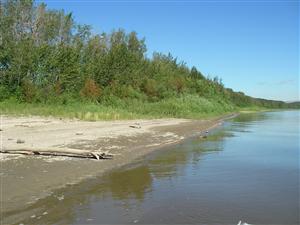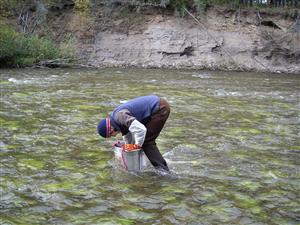Using Benthic Invertebrates as Bioindicators
Benthic invertebrate communities are often used as indicators of aquatic ecosystem health because many species are sensitive to pollution and sudden changes in their environment. Community characteristics—such as abundance, richness, diversity, evenness, and community composition—can be monitored to determine whether the community is changing over time due to natural or human-caused impacts.
The orders Ephemoptera (mayflies), Plectoptera (stoneflies), and Trichoptera (caddisflies) are pollution sensitive taxa. The EPT index is the proportion of the benthic invertebrate community belonging to these taxa. Chironomids are generally considered to be pollution-tolerant; therefore, determining the ratio of chironomids to EPT species can be a good indicator of pollution levels.
Characteristics of benthic invertebrate communities are highly dependent on habitat conditions, and monitoring should take these differences into account (e.g., communities in rivers/streams and lakes are generally not compared). Rivers and streams often have more diverse benthic habitats than lakes, resulting from the riffle-pool sequences found in these lotic (running water) environments. Habitat diversity leads to diversity in the benthic community as different species make use of the varying conditions available. In river and stream substrate, the highest density of benthic invertebrates is often found at depths of 5 to 20 cm, where there is food-rich porous sediment.
In lakes, benthic invertebrates are often found in the shallow waters and decrease in density and diversity as the lake becomes deeper. These shallow sections of the lake generally have greater amounts of oxygen, higher habitat heterogeneity, and greater food resources. Benthic invertebrates commonly found in shallow lakes include nematodes, flatworms, gastrotichs, freshwater mussels, oligochaetes, amphipods and some crayfish. Snails and dragonfly nymphs can also be found in the shallows of a lake or on the vegetation in the shallows.










